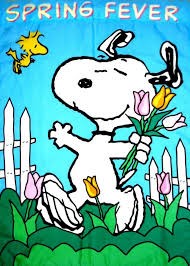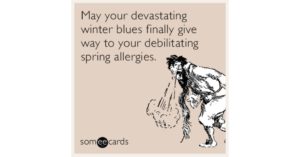Balancing Spring Fever with Spring Allergies
Wikipedia defines Spring Fever as a term applied to various mood, physical, or behavioral changes, which may be experienced coinciding with the arrival of spring. It is not a medical term, and is not considered a disease or malfunction of the human body.
It refers to a general increase in energy and vitality, as well as a feeling of restlessness associated with the end of winter. The concept, however, may have a biological basis. The longer periods of daylight and arrival of Spring often lifts ones’ moods, especially those who suffer from seasonal affect disorder (SAD), which manifests as lower levels of energy and even depression during the winter months.
Now if you have Spring allergies, you might find it hard to enjoy the outdoors during your Spring “fever.” But do not let allergies stop you from outdoor activities and exercise as the days get longer and warmer. Here are a few tips referenced from WebMD and Health.UsNews.com to deal with this dilemma and balance your mind’s desire with your body’s reactions: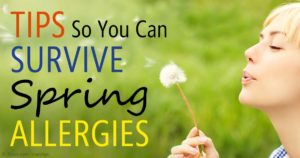
1. Know your Pollens and know YOUR Enemy:
If you have already been tested for allergies and know your specific trigger, for example grass, ragweed, trees, or mold, then you can check the number rating to tell you much of those allergens are in the air throughout the day. There are different readings for different types of pollens. A tree pollen level above 50 is high, for example, while 1 to 10 is considered low. Check a weather or other web site, such as American Academy of Allergy, Asthma and Immunology, that tracks pollen counts for trees, mold, weeds, and grass in your areas.
2. Watch the Clock and the Sky:
Depending on your allergy, you may want to avoid certain parts of the day. According to the National Institute of Allergy and Infectious Diseases, pollen is usually at its peak levels during warm, dry windy weather and at its lowest during cool, damp weather. Ragweed counts usually peak in early midday, while grass pollen counts are higher in late afternoon and early evening. High humidity, however, can cause also problems. If the air feels heavy, you may have a hard time breathing. The humidity also fuels mold growth, which can trigger symptoms for some people. Mold spores are at their lowest in the early morning. On the other hand, rain clears the air, making it a good time to go outdoors if you have allergies.
3. Proper Exercise, Clothing, and Cleansing:
– Pick the Right Exercise. Running in cold weather could trigger symptoms. Often it is not a true allergy that causes these problems, but spasms in your airways. With proper treatment, you should be able to do any sport or activity without a problem. If not, you may need to take another look at your treatment plan. Soccer or field events are not advisable if you have grass allergies, and avoid running through trees if you are sensitive to tree pollen. Swimming and biking are usually excellent for building up your lungs. But chlorine from indoor pools can be irritating to some people. Use caution at pools and bike trails, and leave the area if you have trouble breathing. Remember to breathe through the nose, not the mouth and exercise out of the direction of the wind. Perhaps try yoga outside at a time when the counts are low. But again, leave if you experience allergic symptoms.
– Cover Your Hair and Shield your Eyes. It is important to wear a hat so pollen does not stick to your hair and cause continual irritation. This is especially important for people who do not wash their hair every day. A billed hat, like a baseball cap, can play double duty by protecting your hair from irritants and providing sun protection. Though it would be wise to also wear sunglasses to protect your eyes from pollen, pollutants, and harmful UVA and UVB rays.
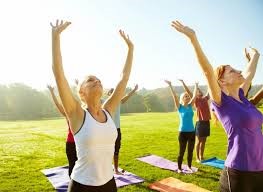 – Get Clean
– Get Clean
Bathe or shower after exercising as soon as possible so that pollen and other irritants do not linger on your body long after your venture outside. If you have exercised at night, wash thoroughly before hitting the hay to prevent your allergy symptoms from getting worse. If you live and work-out in an urban area, winds can bring the pollen in town so that levels peak around midday. If you go out during high-pollen times, consider wearing a face mask. As soon as you get home, rinse out your nose with saline to get rid of any grains inside.
– Discuss your medicines and take them before your sneeze
Some nose sprays will make it easier for you to exercise when pollen levels are high; check with your allergist. If you know you have spring allergies and you cannot function without medication, consult your doctor and start medication as soon as he/she recommends. Talk with your pharmacist about possible over-the-counter and prescription options, if necessary. Pay attention to the weather, especially when winter weather turns warm and pollens and molds release into the air.
4. Listen to Your Body:
If you’re taking medicine and you still feel tired after exercising outdoors, or if it causes symptoms that you do not like, you may want to keep your workouts indoors. Focus on flexibility rather than cardiorespiratory if your symptoms are slow to disappear. Keep windows and doors closed and use fans for cooling down and air circulation.
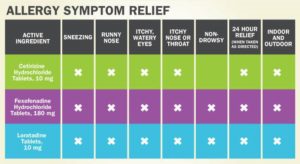 5: Natural remedies:
5: Natural remedies:
Natural remedies that may help include drinking certain teas. Rooibos tea contains bioflavonoids, which block the histamines that cause many allergy symptoms such as sneezing, coughing, and watery eyes. Additionally, Green tea contains a powerful antioxidant *phytonutrient called epigallocatechin gallate that blocks histamine and immunoglobulin E (*Reference: Healthy Living). Also, Licorice Root is an anti-inflammatory, and several teas are on the market with this ingredient.
Our Personal Trainers and Certified Nutritionists here at moreFIT can help you assess your needs and desires for balancing outdoor activity and allergies as the Spring presents itself…though not soon enough!

